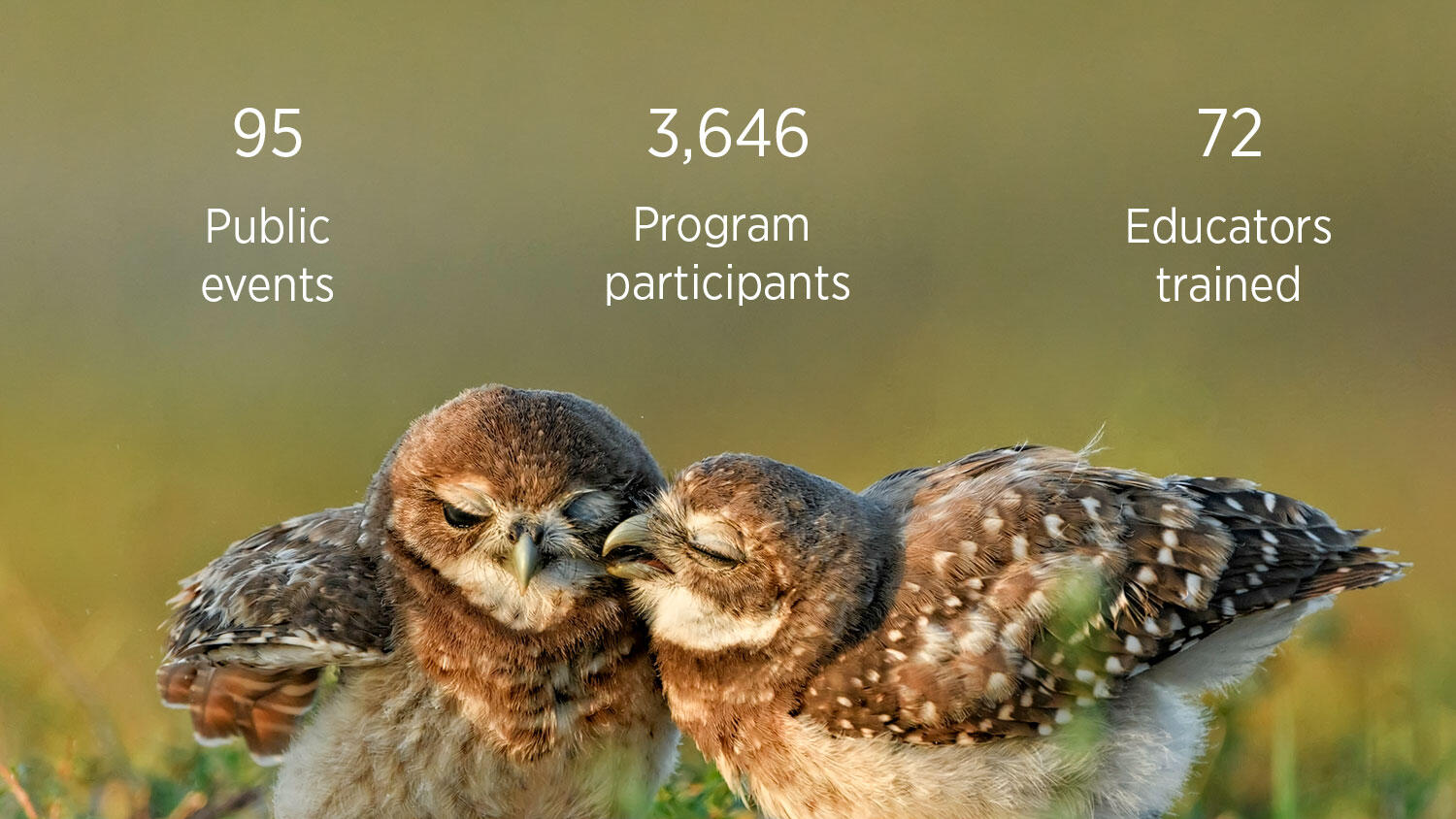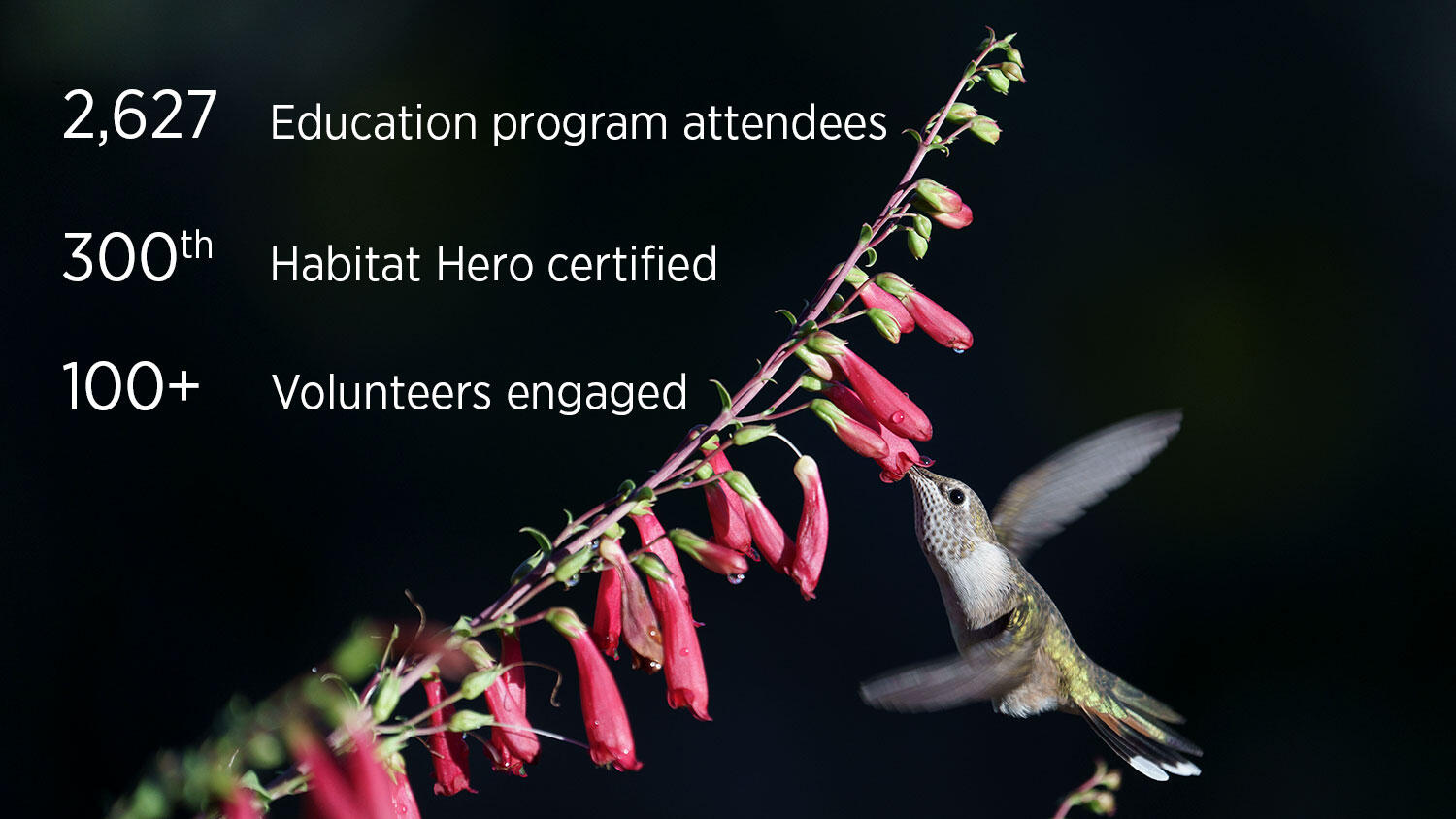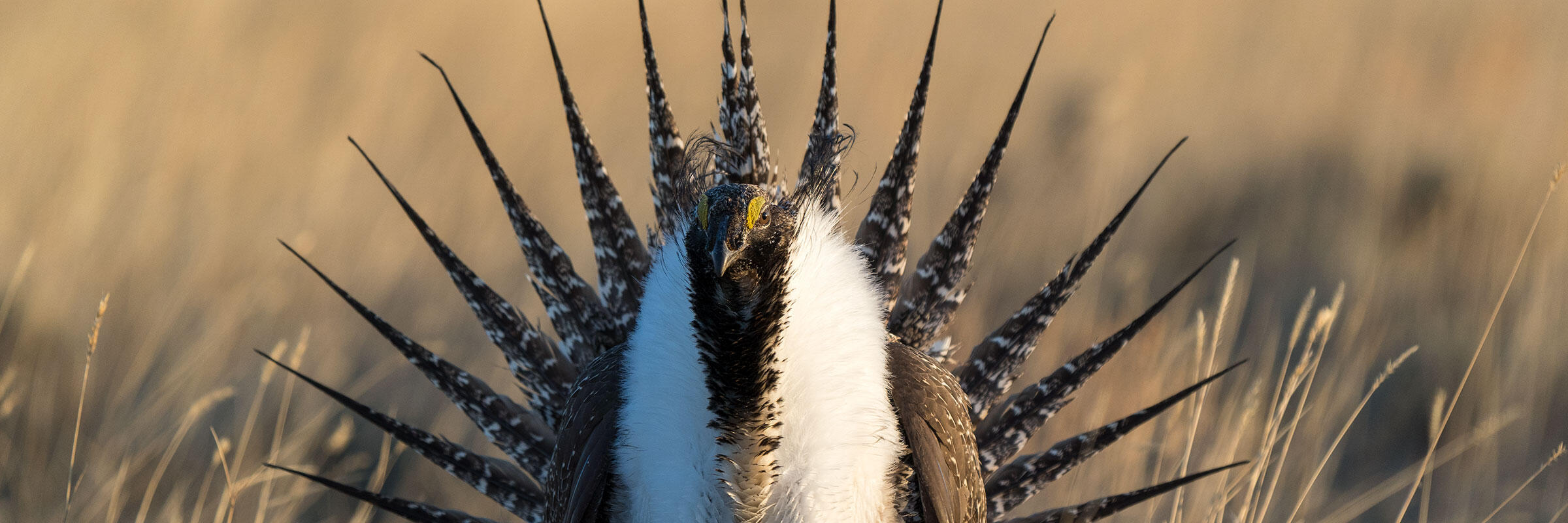During the pandemic, people have needed nature more than ever
Exploring Four Mile Ranch at a socially distanced event. Photo: Keith Bruno
People will only conserve what they care about, but people are increasingly disconnected from nature. That’s why our Community Naturalist program inspires lasting connections to nature by delivering place-based programs to people across Wyoming and Colorado, both outdoors and in classrooms. Additionally, our community science programs help people understand the role of science in conservation. To expand our impact even further, we develop quality resources and trainings to help educators teach their students about nature and science.
One of the greatest threats that birds face is habitat loss. To address this, our Habitat Hero program provides people, businesses, and cities with the resources to create bird habitat in their own communities. Collectively, Habitat Hero volunteers are weaving together a landscape in which birds and wildlife flourish. This is also a powerful way to recruit new audiences into bird conservation. By planting native gardens, we’re not only creating more beautiful and water-efficient communities, we’re connecting people to nature.
“Our ‘go-to’ has always been in-person engagement. Whether in the field or the classroom, we’ve always relied on that tactile exchange of sharing our passion directly with youth and adults about birds and the natural world,” said Education Programs Manager Jacelyn Downey. When the coronavirus hit, we had to find new ways to share that passion.
Shortly after the pandemic shuttered the country, we began creating videos and blog posts that gave parents ideas for exploring nature with their kids. As the pandemic continued through the summer, we held our first virtual youth summer camps and transitioned them into monthly virtual afterschool programs. To connect with adults, we held a virtual educator workshop and several birding webinars.
We found a very positive reception to our new programs despite the challenge of connecting with people through screens. Take, for example, a birding basics class that Community Naturalist Zach Hutchinson hosted virtually for the first time. More than three hundred people of all ages registered for the class. “In a moment that I hope is a more genuine reflection of 2020, countless families gathered around their computers to cultivate a knowledge of birds, instead of turning to their individual devices and streaming platforms that only keep us separated.”
“Though difficult to initially imagine, we think this shift has broadened our ability to be dynamic in how we reach more people,” said Downey. Without the limitations of distance, we’ve seen a large increase in the number of attendees from across the country.
In a year with so many crises, environmental education may seem like a lower priority, but we’ve seen how it can help people cope. “Nature is healing. When everything else feels chaotic, there is nothing more important than this grounding force for all of us,” said Downey. “We’ve tried to remind folks that the wonders of nature are just outside.”

In late July, 65 volunteers gathered to plant 415 native plants of more than 40 species at the Geothermal Greenhouse Project site in Pagosa Springs, Colorado. Members of Weminuche Audubon Society, Mountain High Garden Club, CSU Extension Master Gardeners, and the Geothermal Greenhouse Project all came together to create this new Habitat Hero demonstration garden.
“The project showcases the need to plant species that create ecological connectivity in our communities and support birds and other pollinators,” said Habitat Hero coordinator Jamie Weiss. “The location along the San Juan River Walk provides a highly visible location for people to take note of this simple yet vital action to improve bird habitat. We hope that it inspires them to do so in their own backyards.”
Although Habitat Hero has established several demonstration gardens across Colorado and Wyoming, this one was particularly gratifying because of the challenges brought on by the coronavirus. According to Community Naturalist Keith Bruno, “Nearly two months before, the informal committee that was working to plan the event had considered the real possibility of canceling the project altogether.”
“Instead of canceling the event, we used state guidelines and advice from our local public health office to guide a safe decision,” said Bruno. In the end, we offered six in-person planting sessions capped at 10 people per session with proper mask-wearing and social distancing.
As always, establishing a new bird-friendly garden benefitted more than just birds. “At large, we found that folks really benefitted from the social interaction,” said Bruno. “People were thirsty to get out of their houses and do something for the greater community good. This project gave them some sense of normal for a day and many of the participants have gone on to join as part of our watering team for the garden, ensuring that the plants thrive.”


Greater Sage-Grouse. Photo: Evan Barrientos/Audubon Rockies
Learn about tremendous challenges and our victories for Greater Sage-Grouse and its habitat this year.